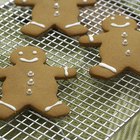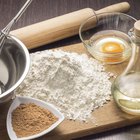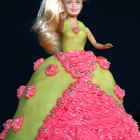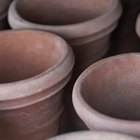elikatseva/iStock/GettyImages
Going Big Changes the Timing
Baking a cake from boxed mix makes it simple enough for anyone's skill level, but if you start changing the size of your pans you'll still need to know a bit about baking. That's especially true if you wan to make a larger cake for a special occasion, using two or more boxes of mix. You can adapt your cake mixes to almost any size of pan up to a full sheet, though you'll need to adjust your baking time accordingly.
It's All About Volume
Whenever you're changing pan sizes, it's useful to know the amount of batter your recipe or box mix makes, and the volume of the pan you want to use. Cake mixes are relatively consistent in volume: Betty Crocker mixes, for example, come in at 4 to 4 1/2 cups per box. Armed with that information, you can turn to a reference chart to see which pans fall into the 8- or 9-cup range for volume. If you're not sure of the size and capacity of your own pans, fill them half-full or two-thirds full of water and then pour the water carefully into a measuring cup. Whichever pan comes closest to the amount of cake batter you have is the best choice, unless you need a specific size or shape. You can cheat with a slightly larger or smaller pan, as long as you're ready to improvise. A larger pan makes the batter shallow, so it cooks more quickly, while a smaller pan makes the batter deeper so it takes longer to cook thoroughly.
Sheet Pans
The sheet pan closest to the right size for two boxes of cake mix is the common 9-inch-by-13-inch size. It's the right size for 10 cups of batter, which would bake for roughly 45 minutes at 350F. Two boxes of mix make slightly less batter, at 8 to 9 cups, so the cake will be slightly thinner than it would with the full amount of batter, and will likely take 8 to 10 minutes less. Start checking for doneness after 30 to 32 minutes to allow for any inaccuracy in your oven's temperature. A half-sheet pan is roughly equal to two 9- by 13-inch pans, and would need four boxes of batter. It would need closer to an hour's baking time. A full sheet pan would take 8 to 9 boxes of mix, but won't fit into most home ovens.
Square and Round Pans
If you're planning a square or round cake, you can choose a smaller, deeper cake or a larger, shallower cake. Two boxes of batter would fit neatly into a 9-inch square pan, making a 2-inch cake that would bake in roughly 50 to 55 minutes. It would also make a 10-inch square cake, but it would be shallower--about 1 1/2 inches--and would bake in 10 to 12 minutes less. In round pans you could opt for a 12-inch cake that's 2 inches deep and bakes in 45 to 50 minutes, or a 10-inch round that's 3 inches deep and bakes in roughly an hour.
Helping the Cake Bake Evenly
When you step up to a larger cake size and a longer baking time, one unavoidable side effect is that your cake will tend to have a bigger "dome," meaning the middle will rise more than the edges. That's because the edges bake and set relatively quickly, while the middle takes longer than usual to set and therefore keeps rising. There are a couple of well-proven ways to cope with this. One is to wrap insulated strips--available from specialty retailers on- and off-line--around the cake pan, so the sides won't bake as quickly. You can improvise your own by wrapping the cake pan in a moistened towel and then setting the cake pan on top of a sheet pan, so the towel's ends can't droop down and make contact with a hot element. You can also speed the cake's baking by placing a conical ring, called a heat core, at the middle. The metal conducts heat into the cake, helping it bake evenly. When the cake has cooled, you remove the core, shake out the small plug of cake from its middle, and replace that into the hole in the cake. Once your cake is frosted, it becomes invisible.
Related Articles

How to Adjust Cake Baking Times for ...
Can I Bake Individual Brownies in ...

Can I Bake Cupcakes in Teacups?

Instructions for Baking Fruit Cake in ...

Does High Altitude Make a Difference ...

What Is a Baking Wire Rack?

Can You Freeze Unbaked Brownie Mix?

A Substitute for Souffle Pans

How to Stop Cakes From Dropping

Does Heat Transfer Evenly Through ...

How to Cook Cheesecake in a Cupcake Pan

What if You Forget to Put Eggs Into ...

Can I Make a Cake Mix in a Ceramic Dish?
How to Bake Cupcakes at High Altitudes

Substitute for a Springform Pan

How to Make a Dome-Shaped Cake

How to Cook Cinnamon Rolls in the ...

Wilton Giant Cupcake Pan Instructions

How to Bake Bread or Cake in Terra ...

How to Make a Tall Fluffy Cheesecake
References
Writer Bio
Fred Decker is a trained chef and prolific freelance writer. In previous careers, he sold insurance and mutual funds, and was a longtime retailer. He was educated at Memorial University of Newfoundland and the Northern Alberta Institute of Technology. His articles have appeared on numerous home and garden sites including GoneOutdoors, TheNest and eHow.